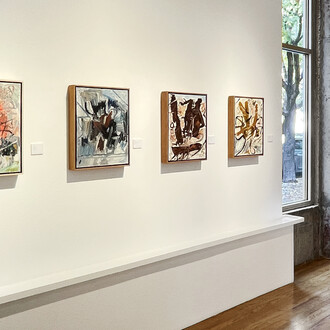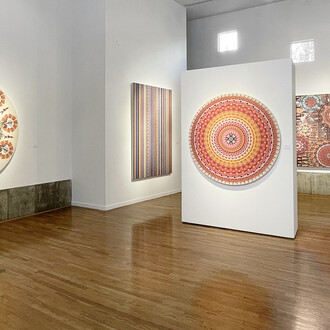Yoshitomo Saito was born in 1958 in Tokyo, Japan. After finishing college work and some professional training in glassblowing, Saito came to the United States to study glass art at the Penland School of Crafts in North Carolina. Yoshitomo Saito relocated to the Bay Area in 1983 to attend the California College of the Arts in Oakland. At CCA, he studied glass under Marvin Lipofsky and sculpture under Dennis Leon and Linda Fleming. It was during this period that Saito began using bronze . He received his Master of Fine Arts in Sculpture with High Distinction in 1987.
Immediately after graduating, Saito began exhibiting his work at leading contemporary art showcases in San Francisco, including the world renowned Haines Gallery. Saito received the Visual Artists Fellowship Grant from the National Endowment for the Arts in 1994. His bronze is included in many prestigious collections in the Bay Area such as the city of San Francisco own M.H. de Young Museum in Golden Gate Park, Asian Art Museum of San Francisco and the city of Oakland Museum of California.
Since moving to Colorado in 2006, Yoshitomo Saito has had numerous solo and group shows in galleries, arts centers and museums in the state, including MILLIONYEARSEEDS February 2 - April 29, 2018 at the Colorado Springs Fine Arts Center. Saito joined the William Havu Gallery in 2017.
“When I create weaving type pieces, I work like a nest-making bird. I start from a small section and expand the form larger by interlacing and interlocking the lines little by little. But unlike birds, I really don’t know how I finish the work. I let my construction grow, ending it with some feeling of unexpected surprises.
While welding, I don’t talk or think, but get absorbed in the task right in front of my eyes. It is technically demanding and physically uncomfortable because of safety gear I must wear all the time. It’s clumsy, dirty work. So at the end of each day, particularly during the hot summer I become like a smoked fish in an oven. By saying that, I may want to imply what’s woven into each piece is not just metal sticks and other natural forms cast in bronze, but invisible fibers made out of my physical psychological experiences and a string of my sculptural imaginations.
My creative impulse includes a compositional preference of basketry format with its dichotomy of hollow and solid. It might also suggest the rustic poetry of Japanese folk art such as bamboo basketries used for their traditional fishery and agricultural activities. The material bronze responds well with this line of earthy connotations.
To create these artifacts with a sort of automatic weaving technique enables me to conjure my interest in nature’s biomorphic abstraction into the work as well, and it has become one of the reoccurring approaches from the early days. Each sculpture describes something amicably familiar, but totally remote at once. The mystery of such discrepancy is a product of my dual-linguistic, culturally intertwined brain. I need to craft these enigmatic artifacts in order to seek some healthy outlet for my otherwise entangled, psychological makeup. The process of weaving is a metaphorical experience of myself being woven and the results are uniquely constructed salvations to my awareness.”















